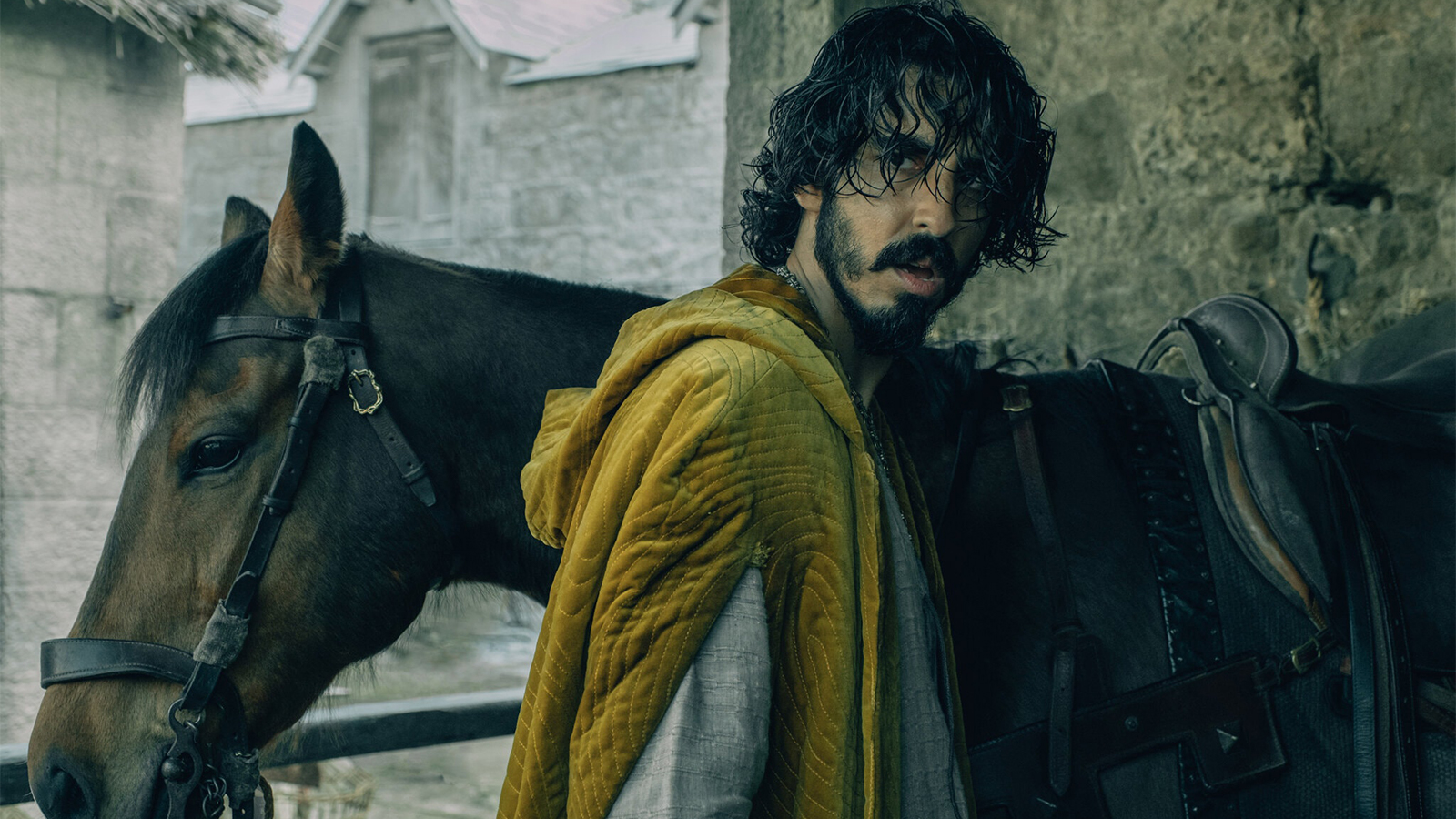Review: The Green Knight
This article appeared in the July 29 edition of The Film Comment Letter, our free weekly newsletter featuring original film criticism and writing. Sign up for the Letter here.

The Green Knight (David Lowery, 2021). Photo by Eric Zachanowich / A24 Films
Neither a lurid Game of Thrones–style kill-fest nor an earnest Manichean struggle in the vein of the Lord of the Rings trilogy, David Lowery’s The Green Knight is high fantasy for the A24 generation. Abounding in psychotropic CGI, handsome symmetrical compositions, medieval fonts that flash like neon signage, and an eerily evocative string section that gives way to waves of droning choir vocals, Lowery’s sumptuous adaptation of Sir Gawain and the Green Knight exemplifies a certain trend that mistakes formal bravado for accomplished storytelling.
Opening with the epic, palpably menacing image of a flaming black throne, the film cuts to the banal mingling of farm animals before pulling back to reveal our hero literally rolling in the hay with his lowborn sweetheart (Alicia Vikander) in a whorehouse. Played by a grizzled Dev Patel, Gawain may look like a knight, but he has yet to perform any act worthy of King Arthur’s Round Table, an update that transforms the Arthurian tale of chivalry into a more digestible, sensation-driven coming-of-age narrative.
Enter the Green Knight, a creaking, oaken goliath who interrupts the court’s Christmas Day feast with a curious proposition: any man brave enough to strike him will receive his axe, though in order to honor the game our hero must journey to a faraway chapel the following year and receive a blow in return. Seeing it as a quick means of attaining glory, Gawain accepts the challenge, lobbing off the Knight’s head, which instantly regenerates. As the next Christmas approaches, a sheepish Gawain is practically forced by his uncle, the King, to comply with his pact, unfolding a fever dream of not-so-heroic events in the enchanted outback.
From the stark confines of the King’s court, Lowery—a proven conjurer of fairy-tale atmospheres with films like Pete’s Dragon and A Ghost Story—pivots into familiarly vertiginous territory, thrusting Gawain in and out of consciousness as he traverses, or stumbles into, a number of hallucinatory set pieces connected by supple transitional shots: a steaming battlefield, a verdant hill overlooking a flock of lithe giants, a magical lagoon containing a damsel’s missing head. Here, Lowery privileges physical experience over narrative, instilling a raw, sensual dimension to Gawain’s spiritual and bodily upheavals, the most stirring of which involves a witchy mistress (Vikander again) who draws from our hero a handful of globby semen.
The Green Knight’s attempts to blend a young man’s personal reckonings and psychic confrontations with Lowery’s go-for-broke stylings feel less virtuously enigmatic than flat and disjointed in their opaque graspings at profundity. Compelling elements—the tension between Gawain’s pagan roots and his Christian calling, the feminine symbolism of Vikander’s dual roles, Gawain’s shame-fueled motivations and misguided yearnings—gesture at a more complete and convincing character study. As in his meditations on the passage of time in A Ghost Story and The Old Man and the Gun, Lowery once again reverts to his ongoing fascination with mortality, anticipating a muscular final sequence that nevertheless feels predetermined and conceptually pat. Refreshingly lascivious though it is, The Green Knight treads on uneven ground, committing fully to its delirium of purloined aesthetics only to expose Lowery’s overly schematic insights.
Beatrice Loayza is associate web editor at the Criterion Collection. She writes about film and culture for the New York Times, Reverse Shot, Cinema Scope, The Baffler, and other publications.







